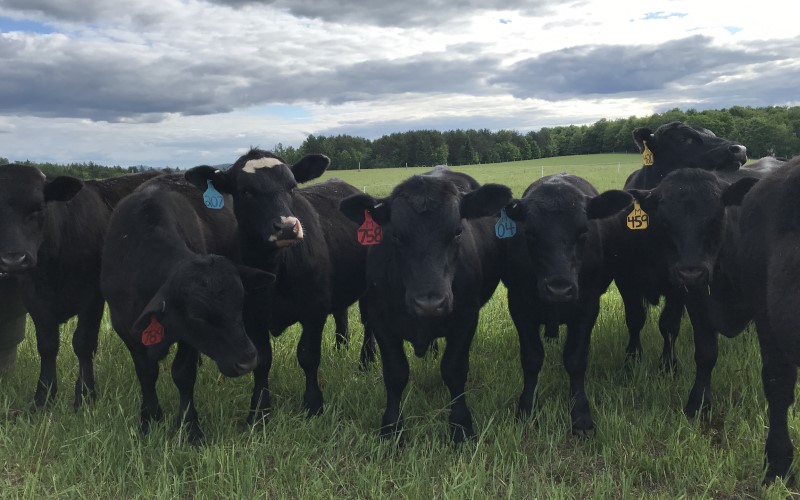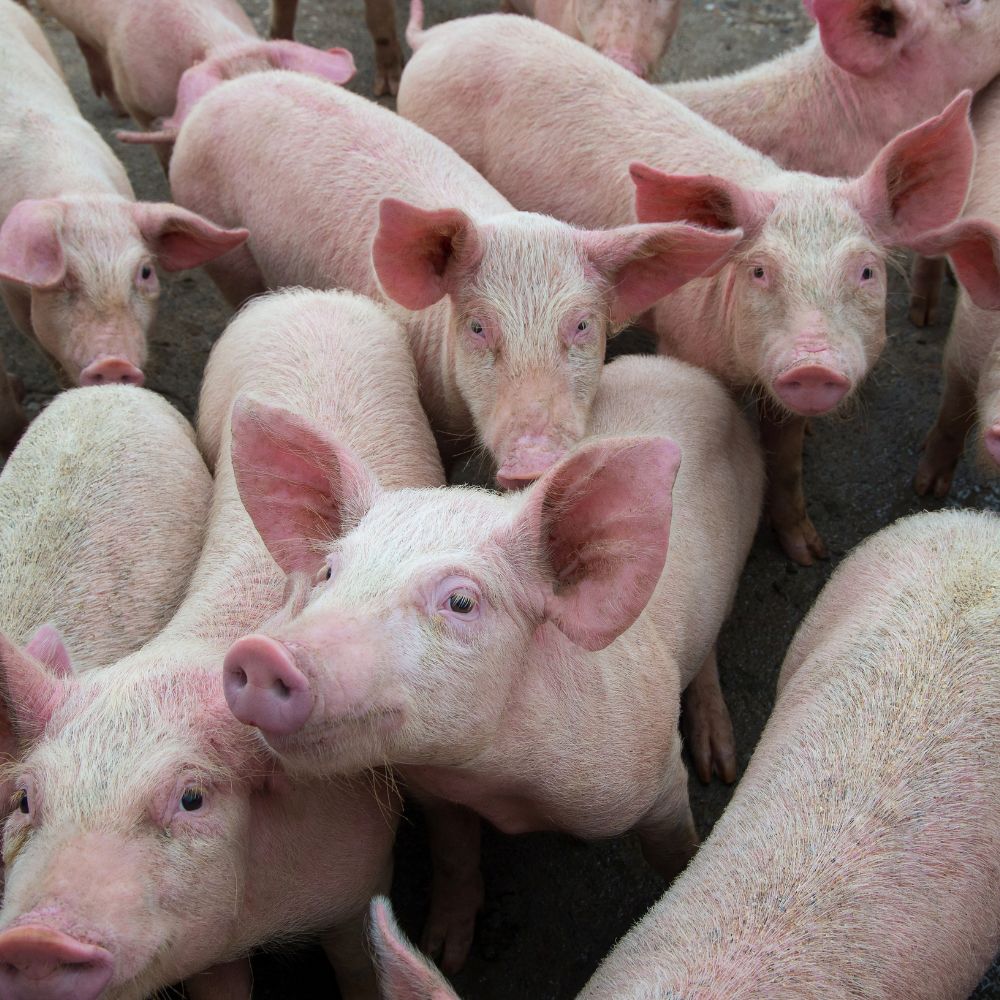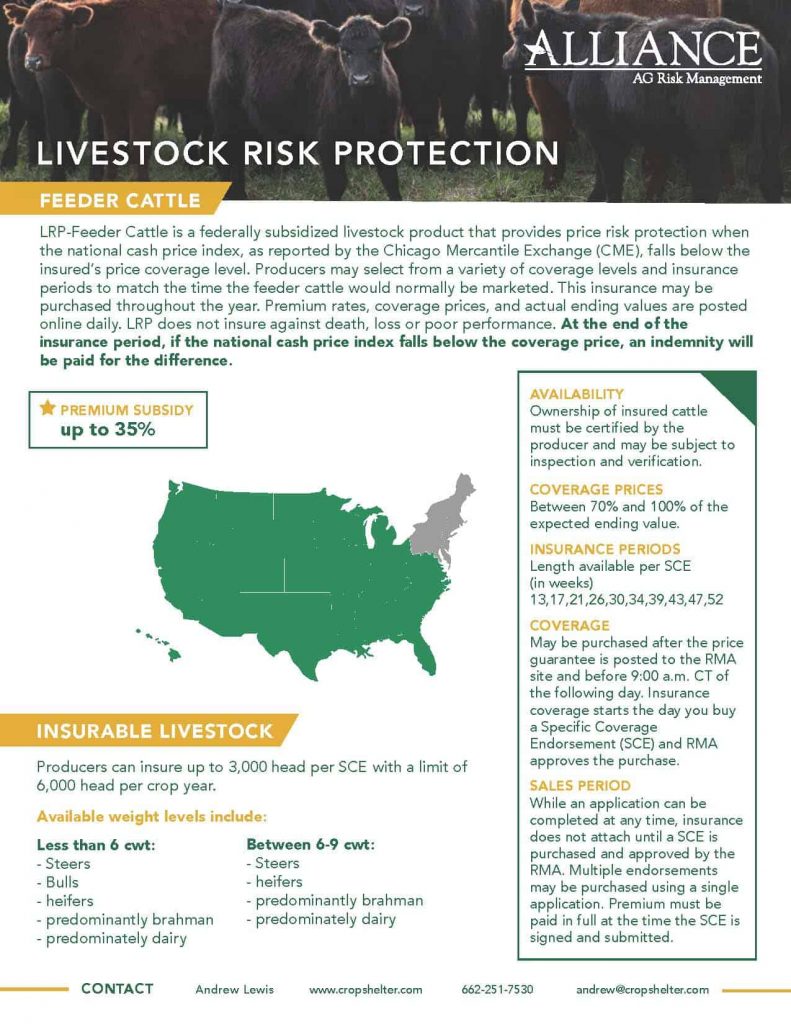Proactive Defense: Bagley Risk Management Tips
Proactive Defense: Bagley Risk Management Tips
Blog Article
Comprehending Livestock Risk Security (LRP) Insurance: A Comprehensive Overview
Navigating the world of livestock danger defense (LRP) insurance policy can be a complicated endeavor for several in the agricultural field. This type of insurance policy provides a safety and security web against market changes and unexpected conditions that might impact animals manufacturers. By comprehending the intricacies of LRP insurance policy, producers can make informed choices that may secure their procedures from monetary threats. From exactly how LRP insurance policy functions to the different coverage options available, there is much to discover in this comprehensive guide that might possibly form the way animals manufacturers come close to threat monitoring in their organizations.

Exactly How LRP Insurance Functions
Periodically, recognizing the auto mechanics of Livestock Threat Security (LRP) insurance can be intricate, yet breaking down just how it works can provide quality for farmers and breeders. LRP insurance policy is a danger management device developed to shield animals producers versus unforeseen rate decreases. The plan allows manufacturers to set an insurance coverage level based upon their particular demands, selecting the variety of head, weight variety, and insurance coverage price. As soon as the policy remains in place, if market costs drop below the insurance coverage price, manufacturers can submit an insurance claim for the difference. It is essential to note that LRP insurance coverage is not a revenue assurance; rather, it focuses exclusively on rate risk security. The insurance coverage period typically varies from 13 to 52 weeks, giving flexibility for producers to pick a period that aligns with their production cycle. By using LRP insurance policy, farmers and ranchers can alleviate the economic risks connected with changing market prices, making sure better security in their procedures.
Qualification and Protection Options

When it comes to protection alternatives, LRP insurance uses manufacturers the flexibility to select the coverage level, protection duration, and endorsements that finest suit their danger monitoring needs. Coverage levels generally vary from 70% to 100% of the anticipated ending value of the insured livestock. Manufacturers can additionally select coverage periods that line up with their manufacturing cycle, whether they are guaranteeing feeder livestock, fed livestock, swine, or lamb. Endorsements such as price danger defense can further customize protection to secure versus negative market variations. By understanding the eligibility criteria and coverage options available, livestock producers can make informed decisions to take care of risk effectively.
Benefits And Drawbacks of LRP Insurance Coverage
When assessing Animals Threat Security (LRP) insurance, it is important for livestock manufacturers to consider the downsides and benefits intrinsic in this risk monitoring device.

One of the main benefits of LRP insurance policy is its ability to supply defense against a decline in animals costs. This can aid protect manufacturers from economic losses resulting from market changes. In addition, LRP insurance coverage uses a degree of flexibility, enabling manufacturers to tailor coverage levels and policy durations to fit their certain demands. By securing a guaranteed cost for their animals, manufacturers can much better take care of threat and plan for the future.
One constraint of LRP insurance coverage is that it does not safeguard against all types of risks, such as condition break outs or all-natural calamities. It is important for manufacturers to meticulously examine their individual danger direct exposure and financial circumstance to establish if LRP insurance coverage is the appropriate threat monitoring tool for their operation.
Comprehending LRP Insurance Policy Premiums

Tips for Maximizing LRP Conveniences
Making the most of the benefits of Animals Risk Protection (LRP) insurance coverage needs critical planning and positive danger management - Bagley Risk Management. To maximize your LRP coverage, take into consideration the following ideas:
On A Regular Basis Evaluate Market Problems: Stay informed concerning market patterns and cost fluctuations in the livestock market. By keeping track of these elements, you can More Help make educated decisions regarding when to purchase LRP protection to secure versus possible losses.
Establish Realistic Coverage Levels: When choosing insurance coverage degrees, consider your manufacturing costs, market price of livestock, and prospective risks - Bagley Risk Management. Setting practical coverage degrees ensures that you are adequately secured without paying too much for unnecessary insurance policy
Expand Your Insurance Coverage: Rather of relying solely on LRP insurance policy, think about diversifying your danger administration strategies. Integrating LRP with various other risk administration devices such as futures agreements or options can offer detailed insurance coverage against market unpredictabilities.
Testimonial and Readjust Protection Regularly: As market problems transform, regularly assess your LRP protection to guarantee it straightens with your present risk exposure. Readjusting insurance coverage degrees and timing of acquisitions can help maximize your threat protection method. By following these ideas, you can optimize the advantages of LRP insurance and guard your livestock procedure against unanticipated risks.
Conclusion
To conclude, livestock risk defense (LRP) insurance is a beneficial tool for farmers to handle the economic threats related to their animals procedures. By recognizing just how LRP works, eligibility and insurance coverage choices, as well as the pros and disadvantages of this insurance coverage, farmers can make educated decisions to shield their incomes. By meticulously considering LRP premiums and executing strategies to make best use of benefits, farmers can reduce possible losses and ensure the sustainability of their operations.
Livestock producers interested in getting Animals Threat Protection (LRP) insurance coverage can check out an array of qualification standards and coverage choices tailored to their details animals operations.When it comes to protection alternatives, LRP insurance coverage provides manufacturers the versatility to pick the protection degree, protection duration, and recommendations that ideal fit their danger management requirements.To realize the complexities of Animals Threat Protection (LRP) insurance policy fully, recognizing the factors influencing LRP insurance coverage premiums is vital. LRP insurance premiums are figured out by numerous components, consisting of the insurance blog coverage level chosen, the expected price of livestock at the end of the coverage duration, the kind of livestock being guaranteed, and the size of the coverage duration.Review and Change Coverage On a regular basis: As market conditions alter, occasionally assess your LRP coverage to ensure it straightens with your current risk direct exposure.
Report this page